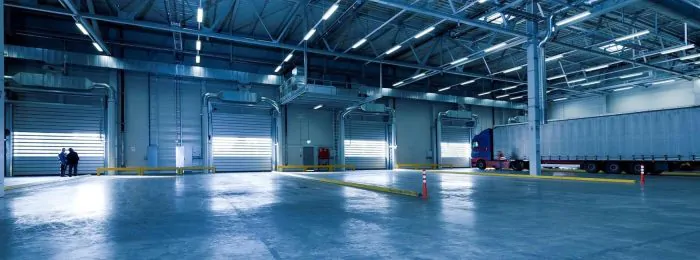Italy is synonymous with quality. So it’s only natural Italians demand the same standards from foreign brands. Here’s how to stand out with our guide to Italian consumer behaviour.
Be honest.
When you think of the world’s biggest economies, Italy isn’t the first country that springs to mind. Its financial woes since 2008 have been well documented.
So why should you take your brand there?
Despite the scary headlines, Italy is actually the fourth largest economy in Europe and the ninth largest in the world. And in these uncertain times, spending is more popular than saving.
But you can’t just tip up and expect customers to love you. You’ll have to earn their trust. And an understanding of Italian consumer behaviour is essential to winning them over. Here’s what you need to know.
CHANGING WITH THE TIMES
Italy’s population is changing.
The country’s median age is slowly but steadily increasing from 44 in 2010 to an estimated 51 by 2030. This ageing population will have strong spending power.
Building your brand today could influence Italian consumer behaviour long-term. Brands with products and services geared towards older customers will be in a unique position to benefit. So don’t fall into the trap of skewing too young with your marketing.
Don’t forget about millennial Italians though. In recent years, there’s been a sharp rise in single person households. 31% of the Italian population lives alone. In urban centres like Milan, it’s 52%. Young Italians are marrying less – and are older when they do tie the knot. They’re also having fewer children.
This means Italian young professionals have a higher level of disposable income than in the past. Due to pessimism about the future, they’re keen to spend it – saving is seen as a pointless pursuit. They’re particularly keen to spend on high-quality products and luxury brands.
Check out our white paper with all the tips and tricks luxury brands need to appeal to overseas millennials.
HIGHER QUALITY, HIGHER SERVICE
Italians expect and demand high-quality products. It’s what they experience from local companies, and therefore what they’ll require from you. To get a foothold in the market, focus your initial marketing efforts on the brilliance of your product or service. (And make sure your product lives up to expectations.)
Hand-in-hand with this, Italians value seamless service. In fact, good customer service is more important to them than the price. Italy’s English level is average, so localize your post-sales support. Hire an Italian-speaking customer service team and wow customers with exclusive deals and promotions.
GO PREMIUM
Given the Italian pursuit of excellence, it’s no surprise that premium products are popular. The category is recording steady growth.
But make no mistake. It’s not about charging more. Only 15% of Italians think higher prices are a sign of a premium product. Instead, they focus on the quality of materials and ingredients.
Craftsmanship is particularly important, as this plays to Italy’s heritage. 99.9% of Italian businesses are SMEs, evoking the image of passionate artisans pouring their hearts and souls into the products.
Because of this, Italians want to know where their goods come from – and the ‘Made in Italy’ label is particularly alluring. Given the choice, they’ll choose home-grown.
This is a tough obstacle for foreign brands to overcome. What can you do?
Firstly, align yourself with Italian values. Champion the quality of your product. But do this by championing the people and heart behind your brand. Shout about your heritage and your brand’s motivations. And consider how to premiumize your products.
MAKING STARBUCKS ITALIAN
Take Starbucks, for example. At first glance, few companies are less well suited to Italy. Italians are proud of their coffee, and drink it very differently from the model offered by the American chain.
In Italy, coffee comes in one size and one variety – espresso. Italians drink it standing at the bar, stay for only a few minutes, and pay around €1 for the privilege. Even the smallest café prides itself on the quality of its coffee, so claims of superiority will be met with ridicule.
None of that deterred Starbucks. In September 2018, they opened their first Italian store in Milan, with plans for more. But it’s very different from your average Starbucks.
Frappuccinos are out, locally roasted Arabica coffee beans are in. The café’s billed as a Reserve Roastery, with added dolce vita. It’s decked out in Tuscan marble and comes complete with an AR experience focused on the roasting process. They’ve dialled up Milan’s mythological role in the company’s founding too. (It was founder Howard Schultz’s inspiration). In short, the American brand has injected itself with Italian DNA.
As part of this, it’s positioned itself as a premium coffee alternative with more expensive prices. It’s hoping this will all be enough to influence Italian culture and transform the brand into a status symbol for aspiring businesspeople.
Will it work? Time will tell. But by appealing to Italian culture, they’ve given themselves the best chance of success.
FINAL THOUGHTS
Launching your brand in Italy may feel like a daunting task. But take the time to understand Italian consumer behaviour. Not only will it reap rewards now – it’ll also pay dividends in future. Offer high quality, excellent service with added Italian flair and you’ll soon win hearts and minds.
Not sure how to adapt your brand for success in Italy? Check out our market research service here, then get in touch. We’d love to help.


